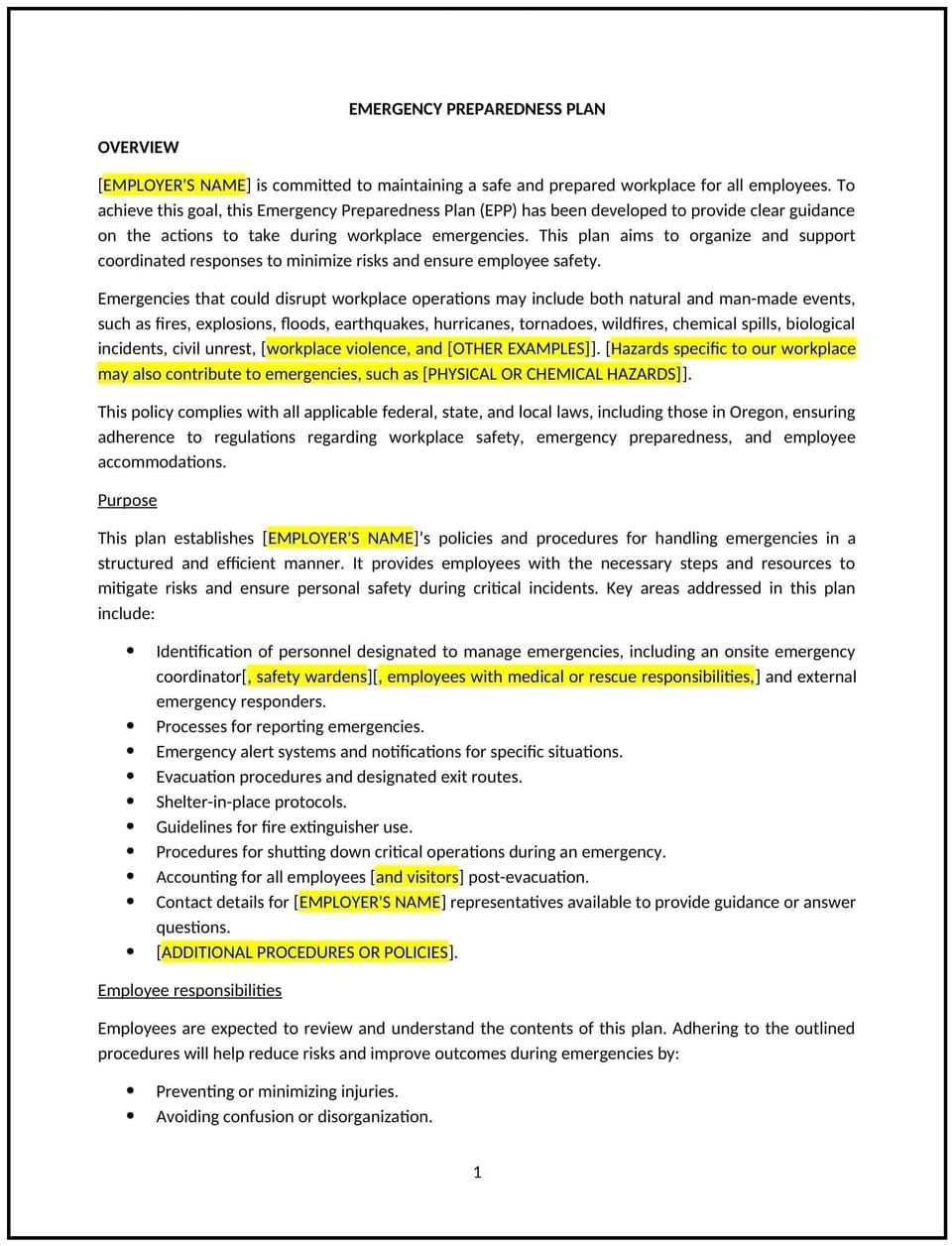Emergency preparedness plan (Oregon): Free template

Emergency preparedness plan (Oregon)
This emergency preparedness plan is designed to help Oregon businesses establish procedures for responding to emergencies such as natural disasters, fires, or workplace incidents. It outlines steps for ensuring employee safety, minimizing business disruptions, and coordinating with local authorities.
By adopting this plan, businesses can protect employees, safeguard assets, and align with Oregon’s emergency preparedness guidelines.
How to use this emergency preparedness plan (Oregon)
- Identify potential emergencies: Assess risks specific to Oregon, such as earthquakes, wildfires, or floods.
- Develop response procedures: Outline steps for evacuations, sheltering in place, and communication during emergencies.
- Assign roles and responsibilities: Designate employees to lead emergency response efforts, such as evacuation coordinators or first aid responders.
- Create communication plans: Establish methods for notifying employees, customers, and local authorities during emergencies.
- Conduct training and drills: Educate employees on emergency procedures and practice response plans regularly.
- Maintain emergency supplies: Stock essential items such as first aid kits, flashlights, and water.
- Update regularly: Review the plan annually to align with evolving risks and business needs.
Benefits of using this emergency preparedness plan (Oregon)
This plan offers several advantages for Oregon businesses:
- Protects employees: Ensures the safety and well-being of employees during emergencies.
- Minimizes disruptions: Reduces downtime and helps businesses resume operations quickly.
- Aligns with guidelines: Promotes compliance with Oregon’s emergency preparedness standards.
- Enhances resilience: Prepares businesses to handle unexpected events effectively.
- Builds trust: Demonstrates a commitment to employee safety and business continuity.
Tips for using this emergency preparedness plan (Oregon)
- Communicate the plan: Share the plan with employees and include it in the employee handbook.
- Provide training: Educate employees on emergency procedures and their roles during a crisis.
- Conduct regular drills: Practice evacuation and sheltering procedures to ensure readiness.
- Maintain supplies: Regularly check and replenish emergency supplies.
- Update regularly: Review the plan annually to align with evolving risks and business needs.
Q: How does this plan benefit businesses?
A: This plan helps businesses protect employees, minimize disruptions, and align with Oregon’s emergency preparedness guidelines.
Q: What types of emergencies should businesses prepare for in Oregon?
A: Businesses should prepare for risks such as earthquakes, wildfires, floods, and workplace incidents.
Q: How often should businesses conduct emergency drills?
A: Businesses should conduct drills at least twice a year to ensure employees are familiar with emergency procedures.
Q: What should businesses include in emergency supply kits?
A: Supply kits should include first aid kits, flashlights, water, non-perishable food, and other essentials.
Q: How often should businesses review this plan?
A: Businesses should review the plan annually or as needed to align with evolving risks and business needs.
This article contains general legal information and does not contain legal advice. Cobrief is not a law firm or a substitute for an attorney or law firm. The law is complex and changes often. For legal advice, please ask a lawyer.


